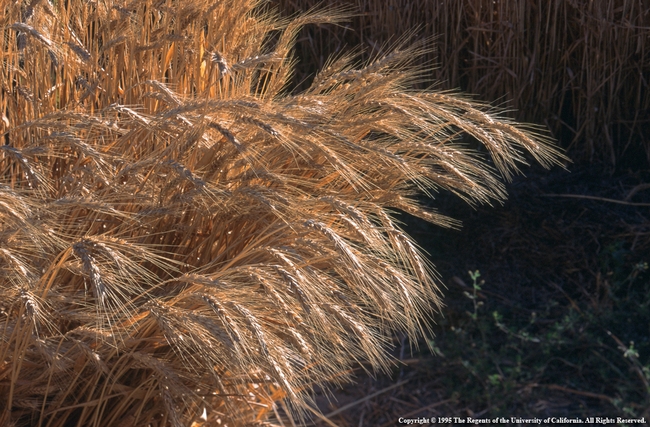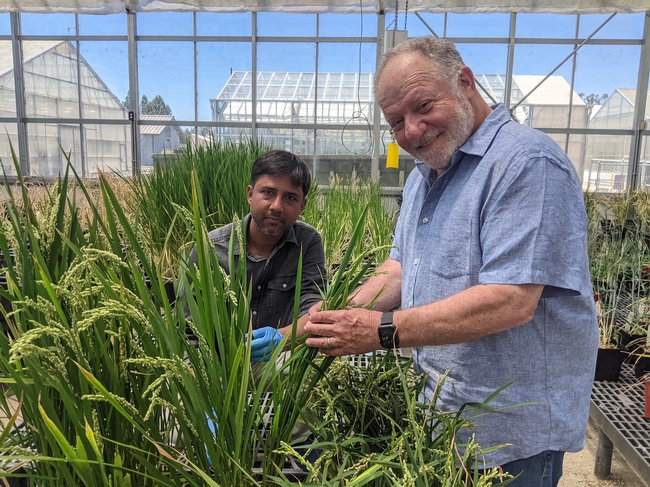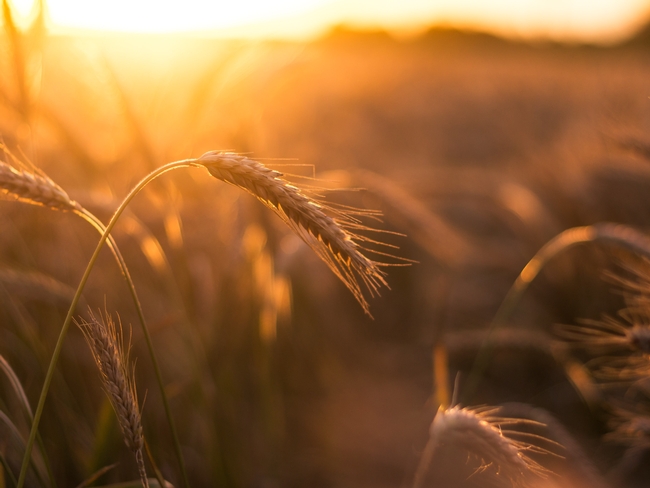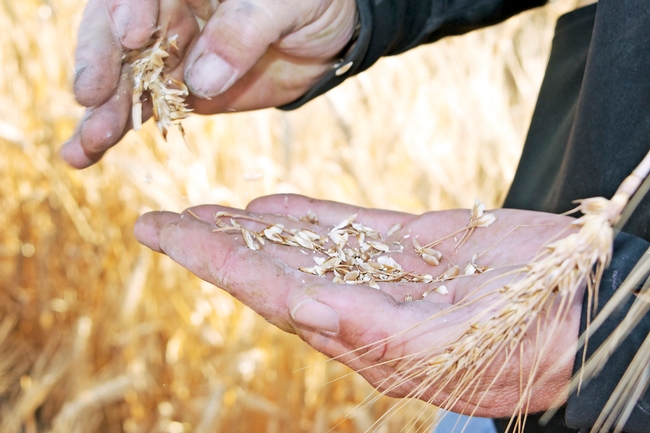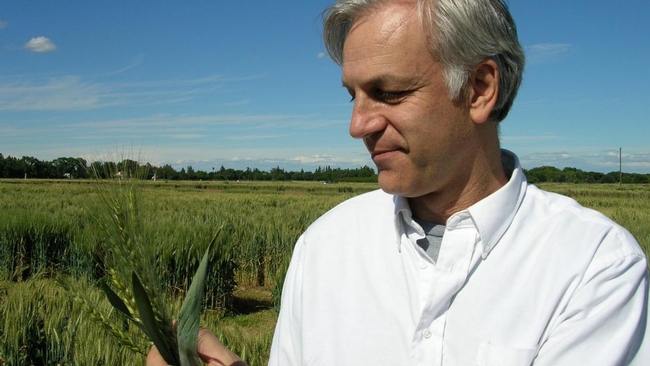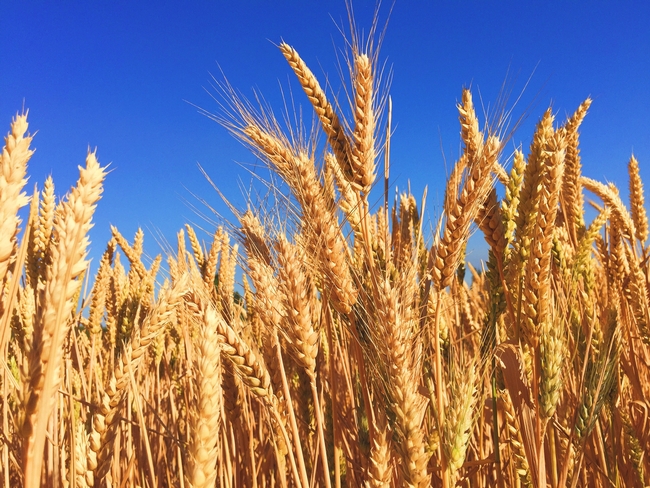Posts Tagged: wheat
Global food security threatened by grain export disruptions
Wheat and corn prices have spiked after Russian aggression in the Black Sea
The Russian invasion of Ukraine in early 2022 caused wheat and corn prices to spike 30% and 13%, respectively, and threatened a worldwide food crisis. International efforts to mitigate a food security crisis via the Solidarity Lanes and the Black Sea Grain Initiative (BSGI) have successfully allowed grain exports out of Ukraine. However, Russia's recent withdrawal from the BSGI, coupled with increased bombings of Odesa and Danube River ports, caused another price spike for these grains. Further aggression in the region risks halting Russian wheat and Ukrainian corn exports across the Black Sea, the main export channel for both countries.
Russia accounts for about 18% of global wheat exports and 2% of worldwide corn exports, while Ukraine provides 15% of global corn exports and only 9% of wheat. Why have these statistics spooked the grain commodity markets?
“The simple answer is that Russia's aggression in the Black Sea region increases the risk of the world grain market losing the number four corn exporter, Ukraine, and the number one wheat exporter, Russia, if grain vessels on the Black Sea become targets of drone strikes,” said Colin A. Carter, Distinguished Professor of Agricultural and Resource Economics at the University of California, Davis. If all grain shipped through the Black Sea by Russia and Ukraine were halted, it would cut off 27% of global wheat exports and 17% of global corn exports.
Analysis of the corn and wheat markets by Carter and Sandro Steinbach, associate professor in the Department of Agribusiness and Applied Economics and the Director of the Center for Agricultural Policy and Trade Studies at North Dakota State University, shows a notable increase in market uncertainty since the start of the Russia-Ukraine War, as evidenced by measuring "implied volatility." Implied volatility is the expected price volatility of a commodity like corn or wheat in options trading. In March of 2022, shortly after the invasion of Ukraine, the implied volatility of corn jumped from 25% to 60%, while wheat rose from 40% to 160%. There was also a second peak in volatility in July 2023, after Russia pulled out of the BSGI, suggesting further fears that grain exports through the Black Sea could be cut off from world markets.
When Russia withdrew from the BSGI, there was another brief price spike in wheat (up 15%) and corn (up 10%). Wheat markets have been consistently more affected by conflict in Ukraine, specifically in the Black Sea, than corn prices. This difference can be explained by the fact that 95% of Russian grain is exported through the eastern portion of the Black Sea, while around a quarter of Ukrainian grain is shipped by truck and rail and would not be as affected by the conflict in the Black Sea. By volume, there is around 1.7 times more wheat than corn shipped from Black Sea ports. The wheat market is more politically charged than the corn market because wheat is primarily a food grain. Therefore, the greatest risk to global food security moving forward may no longer be getting grain out of Ukraine – due to the continued success of the Solidarity Lanes – but rather the loss of wheat exports to the world market that could result from Russia backing out of the Black Sea Grain Initiative.
To learn more about how Russian aggression in the Black Sea might affect global food security, read the full article by Carter and Steinbach, “Russian Weaponization of Food Rattles Global Markets,” ARE Update 26(6): 1–4. UC Giannini Foundation of Agricultural Economics, online at https://giannini.ucop.edu/filer/file/1694637435/20778/.
ARE Update is a bimonthly magazine published by the Giannini Foundation of Agricultural Economics to educate policymakers and agribusiness professionals about new research or analysis of important topics in agricultural and resource economics. Articles are written by Giannini Foundation members, including University of California faculty and Cooperative Extension specialists in agricultural and resource economics, and university graduate students. Learn more about the Giannini Foundation and its publications at https://giannini.ucop.edu/.
Growing cereal crops with less fertilizer
Discovery could reduce nitrogen pollution, save farmers billions
Researchers at the University of California, Davis, have found a way to reduce the amount of nitrogen fertilizers needed to grow cereal crops. The discovery could save farmers in the United States billions of dollars annually in fertilizer costs while also benefiting the environment.
The research comes out of the lab of Eduardo Blumwald, a distinguished professor of plant sciences, who has found a new pathway for cereals to capture the nitrogen they need to grow.
The discovery could also help the environment by reducing nitrogen pollution, which can lead to contaminated water resources, increased greenhouse gas emissions and human health issues. The study was published in the journal Plant Biotechnology.
Nitrogen is key to plant growth, and agricultural operations depend on chemical fertilizers to increase productivity. But much of what is applied is lost, leaching into soils and groundwater. Blumwald's research could create a sustainable alternative.
“Nitrogen fertilizers are very, very expensive,” Blumwald said. “Anything you can do to eliminate that cost is important. The problem is money on one side, but there are also the harmful effects of nitrogen on the environment.”
A new pathway to natural fertilizer
Blumwald's research centers on increasing the conversion of nitrogen gas in the air into ammonium by soil bacteria — a process known as nitrogen fixation.
Legumes such as peanuts and soybeans have root nodules that can use nitrogen-fixing bacteria to provide ammonium to the plants. Cereal plants like rice and wheat don't have that capability and must rely on taking in inorganic nitrogen, such as ammonia and nitrate, from fertilizers in the soil.
“If a plant can produce chemicals that make soil bacteria fix atmospheric nitrogen gas, we could modify the plants to produce more of these chemicals,” Blumwald said. “These chemicals will induce soil bacterial nitrogen fixation and the plants will use the ammonium formed, reducing the amount of fertilizer used.”
Blumwald's team used chemical screening and genomics to identify compounds in rice plants that enhanced the nitrogen-fixing activity of the bacteria.
Then they identified the pathways generating the chemicals and used gene editing technology to increase the production of compounds that stimulated the formation of biofilms. Those biofilms contain bacteria that enhanced nitrogen conversion. As a result, nitrogen-fixing activity of the bacteria increased, as did the amount of ammonium in the soil for the plants.
“Plants are incredible chemical factories,” he said. “What this could do is provide a sustainable alternative agricultural practice that reduces the use of excessive nitrogen fertilizers.”
The pathway could also be used by other plants. A patent application on the technique has been filed by the University of California and is pending.
Dawei Yan, Hiromi Tajima, Howard-Yana Shapiro, Reedmond Fong and Javier Ottaviani from UC Davis contributed to the research paper, as did Lauren Cline from Bayer Crop Science. Ottaviani is also a research associate at Mars Edge.
The research was funded by the Will W. Lester Endowment. Bayer Crop Science is supporting further research on the topic.
Editor's note: Blumwald is affiliated with UC Agriculture and Natural Resources through the Agricultural Experiment Station at UC Davis.
UC Davis to lead $15 million research into climate-change resistant wheat
The project will also train plant breeders for the future
Wheat products account for roughly 20% of what people eat every day around the globe. As climate changes, wheat crops must adapt to new weather patterns to keep up with demand.
The University of California, Davis, is leading a five-year, $15 million research project to accelerate wheat breeding to meet those new climate realities, as well as to train a new generation of plant breeders.
“Everything is less stable,” said Jorge Dubcovsky, a plant sciences distinguished professor who is leading the grant research. “Everything is changing so you need to be fast. You need to be able to adapt fast.”
The grant from the U.S. Department of Agriculture's National Institute of Food and Agriculture will create a coordinated consortium of 41 wheat breeders and researchers from 22 institutions in 20 states. Researchers from Mexico and the United Kingdom are also participating.
Breeding needs to speed up
“Breeding crops for the future will require new traits, breeding platforms built for quick transfer of traits to elite cultivars, coordination of breeding efforts in public and private domains, and training for current and future plant breeders and researchers,” NIFA said in an announcement about this grant and others related to breeding.
The program involves on-the-ground research, identifying molecular markers and data analysis from multiple institutions to determine genes that will help wheat crops mitigate the effects of climate change. Plant breeding will follow to prove out those findings.
Wheat is unlike other crops in that 60% of the plant varieties — generating about $4 billion in annual production — are developed by public breeding programs rather than private corporations. In many states, wheat growers tax themselves to support basic breeding efforts at public institutions like UC Davis.
Increased coordinated research
The NIFA grant money will lead to more coordinated, sophisticated research. “This grant allows us to do breeding at a level that a good, modern company would do,” Dubcovsky said. “This grant is essential to maintain modern and effective public breeding programs in the U.S.”
The consortium will bring together data and research from across institutions, allowing for more expansive analysis while reducing redundancies. “We can take advantage of the data from everybody,” he said. “By doing that we don't need to duplicate efforts.”
A team in Texas will analyze plant images taken from drones at each institution to extract information about plant growth, water use, nitrogen levels and other data. “Using technology, we can see beyond our human capabilities,” Dubcovsky said. “You can extract a huge amount of information from every plant variety.”
The data from those images will allow researchers to document the plants throughout the life cycle and determine which plants fare better under certain conditions. Genotyping will help researchers obtain information about the plant genome. The combination of these two types of data could speed up breeding cycles, helping wheat crops adapt to a changing environment.
“If we can breed fast, we can adapt to change,” Dubcovsky said. “We are trying to make sustainable improvements in time.”
Training the next generation
The project will also train a cohort of 20 plant Ph.D. students in active breeding programs where they will participate in fieldwork, collect data from drones and DNA samples, and learn to integrate that information to accelerate wheat breeding. The students will participate in online and face-to-face workshops, as well as educational events and national scientific conferences.
Colorado State University, Cornell University, Kansas State University, Michigan State University, Montana State University, Oklahoma State University, Purdue University, South Dakota State University, Texas A&M University, University of Idaho, University of Illinois, University of Minnesota, University of Nebraska, University of Wisconsin, Utah State University, Virginia Tech, Washington State University, and U.S. Department of Agriculture Agricultural Research Service branches in North Dakota, Washington, Kansas and North Carolina are also participating in the consortium.
UC Davis team identifies wheat gene that increases yield
The findings could help growers produce more wheat without expanding operation
A team of scientists from University of California, Davis, have identified a new gene variant in wheat that can increase the amount of the grain produced, new research published in the journal PLOS Genetics finds.
Wheat is a staple of food diets worldwide and the gene discovery could allow farmers to grow more food without increasing land use. Increased yield could also lower consumer prices, making the crop more accessible.
“We have a growing human population that likes to eat every day,” said Jorge Dubcovsky, a plant sciences distinguished professor who led the research. “We need to produce more wheat in the same space so we need plants that are more productive.”
The researchers found a gene – WAPO1 – that controls the maximum number of grains in a wheat spike. Breeding the beneficial gene variant into the plants could delay the formation of the terminal spikelet, providing room for more grains to grow in each spike rather than ending production of grain.
WAPO1 is one of the first genes discovered that can affect wheat yield. “We are trying to make more productive wheat varieties and we are starting to understand how that trait is controlled,” Dubcovsky said.
Pasta wheat lacking the gene
The gene variant for high grain number is found frequently in bread wheats but not in pasta wheats. By breeding the beneficial gene variant into those pasta wheat varieties, growers could increase yield by 4% to 5% in cultivars that have the biomass capacity to fill the extra grains.
“We developed molecular markers to select for the form of that gene to produce increased yield,” Dubcovsky said. “It's a significant step forward.”
Previous research by the team mapped the gene and identified others that could affect yield. This research confirmed those findings for WAPO1.
Discovery on path to future yield increases
The WAPO1 gene is part of a network of genes that work together to control yield, and researchers need to identify the best variant combinations to maximize yield. Solving this puzzle can lead to better production rates.
“We will continue to try to understand the network of genes that control the yield of wheat,” he said.
Saarah Kuzay, Huiqiong Lin, Chengxia Li, Shisheng Chen, Daniel P. Woods and Junli Zhang from UC Davis also contributed to the research, as did scientists from Howard Hughes Medical Institute, Heinrich Heine University and Peking University Institute of Advanced Agricultural Sciences.
Funding was provided by USDAs National Institute of Food and Agriculture's Food Research Initiative, the International Wheat Yield Partnership and Howard Hughes Medical Institute.
New ‘big data’ tools help California wheat farmers reduce fertilizer guesswork
Growers in California grapple with plenty of climate uncertainty – but a new set of tools can help wheat farmers make crucial fertilizer decisions with more precision and confidence.
An interactive website integrates these tools – developed or adapted by researchers at the University of California, Davis and University of California Cooperative Extension – that provide farmers with recommendations for applying nitrogen fertilizers, specific to their own sites and conditions.

While factoring in those weather variables, the management tool also draws data from two indicators of nitrogen sufficiency or deficiency: the results of a soil nitrate quick test (a simple test previously used in vegetable crop systems along the coast), and comparisons of plant health in the broader field to that in a “nitrogen-rich reference zone” (a practice originally developed in the Midwest).
Using them in tandem, in the context of California wheat growing, is a novel approach. In a Nov. 4 webinar, Lundy will introduce the use of the nitrogen-rich reference zone, a small area in a field where extra fertilizer is added at the beginning of the season.
“This project is a unique example of digital agriculture at work in an applied setting,” he explained. “We are integrating ‘big data' sources like site-specific soil and weather data, as well as satellite, drone and other sensor measurements into an interactive web interface. This allows users to receive straightforward yet highly customized recommendations from somewhat complex agronomic models.”
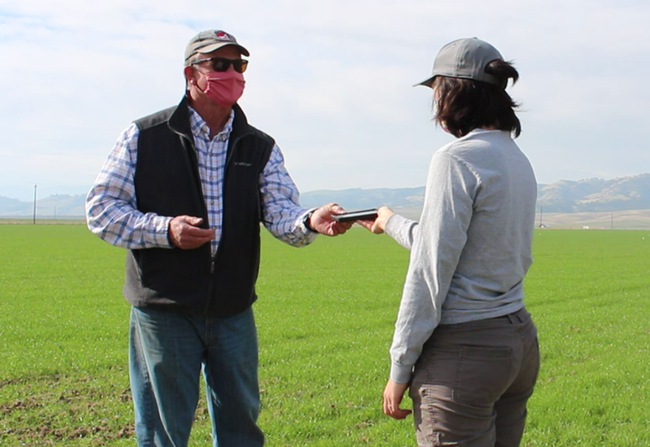
The team conducted 11 on-farm demonstrations in fields representing a wide range of agroecosystems, including the Sacramento Valley, San Joaquin Valley, Delta region, and Tulelake Basin.
Fritz Durst, a western Yolo County-based grower who participated in one of the case studies, said that the process of gathering the data was “actually pretty simple” and the tool “eliminates much of the guesswork” for managing nitrogen fertilizers.
“This tool is extremely helpful for me to make decisions about the most efficient and cost-effective method for applying nitrogen to my wheat,” Durst said.
In addition to potentially increasing crop productivity and farmer net-income, the tool can benefit the environment by reducing the amount of nitrate leaching from fertilizer applications, according to Lundy.
“It's not only trying to say how much fertilizer to put down, sometimes it's trying to confirm you don't really need any fertilizer,” he said.
More resources and events related to the Nitrogen Fertilizer Management Tool for California Wheat – including demonstration activities – will appear on the UC Small Grains blog.
